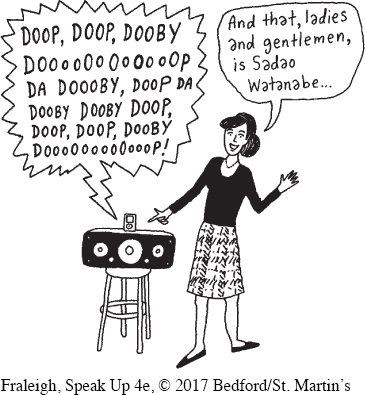Using Other Technology
Although presentation software may seem ubiquitous, it is far from the only option you have for sharing your aids. Your choice of technology—analog or digital—may be dictated by the limitations of your forum or budget as much as by content or personal choice. Furthermore, in many cases, traditional presentation aids are more appropriate and make for more dynamic presentations than do their digital counterparts. A speaker can interact with printed photographs, marker boards, and flip charts, keeping the audience focused on the speaker rather than just on the aid. If you want to share a basic visual as part of your speech, these simple options are often the best choice.
You have similar options when it comes to audio and video. Although in recent years it has become possible to integrate audio and video into presentations using computer software and a digital projector, it often is more convenient or downright necessary to present audio and video using more traditional means—a laptop and a DVD.
Page 418
When you incorporate audio and visual aids into a presentation, some speeches benefit from a mixed approach. A student named Justine did this when she gave an informative speech to her classmates on the history of jazz. During her presentation, she showed actual instruments—a tenor saxophone and an electronic keyboard—and demonstrated a few riffs on each. She later used a record player to play a vintage long-play (LP) recording of a rare Charlie Parker selection. Finally, she shared a digital recording of saxophonist Sadao Watanabe from an MP3 player with speakers attached.
